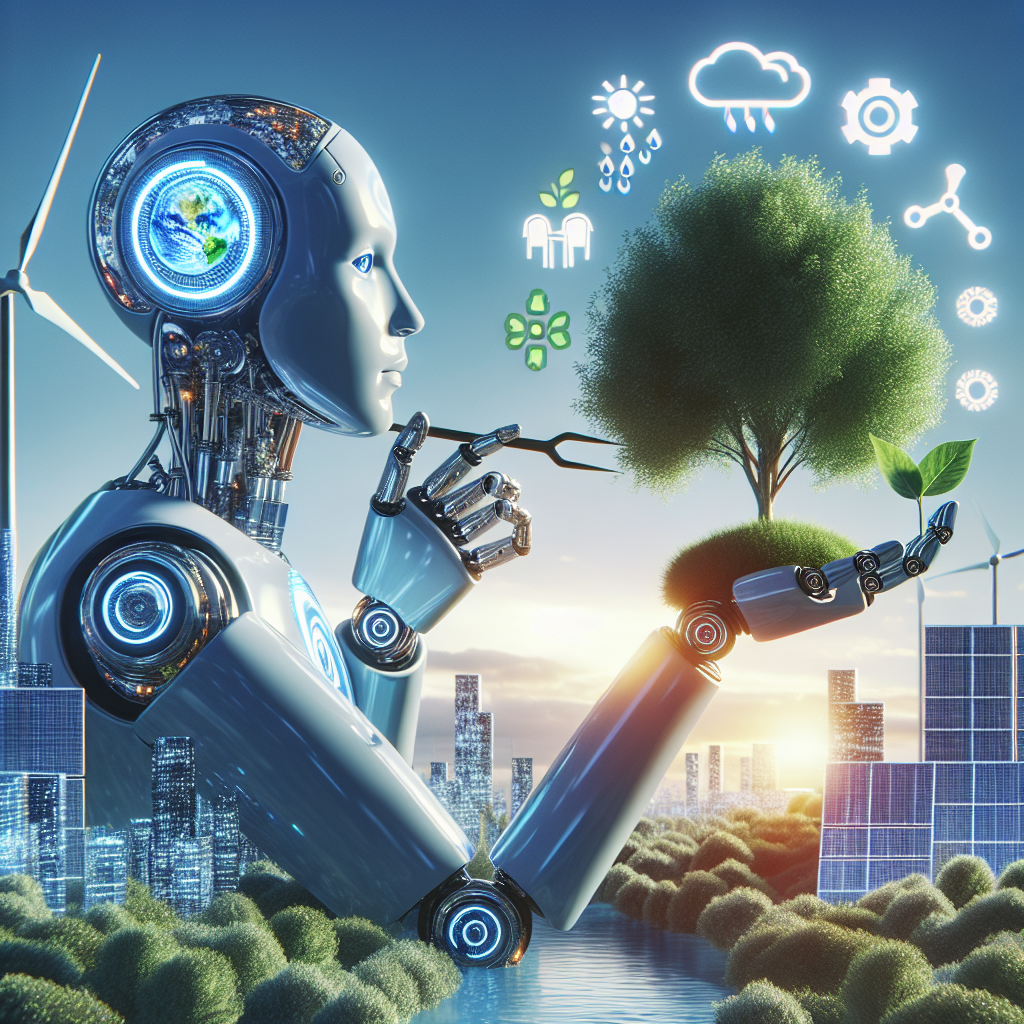AI for Climate Adaptation: Building Resilient Communities
Climate change is one of the most pressing challenges facing humanity today. Rising global temperatures, extreme weather events, and sea-level rise are just a few of the consequences of a warming planet. In order to mitigate the impacts of climate change and build resilient communities, innovative solutions are needed. One such solution is the use of artificial intelligence (AI) for climate adaptation.
AI has the potential to revolutionize the way we approach climate adaptation by providing data-driven insights, predictive modeling, and real-time monitoring of environmental changes. By harnessing the power of AI, communities can better understand the risks posed by climate change and develop strategies to adapt and thrive in a changing climate.
How can AI be used for climate adaptation?
AI can be used in a variety of ways to help communities adapt to climate change. Some of the key applications of AI for climate adaptation include:
1. Predictive modeling: AI algorithms can analyze historical climate data and predict future trends, helping communities anticipate and prepare for the impacts of climate change. For example, AI can be used to forecast extreme weather events such as hurricanes, floods, and droughts, allowing communities to take proactive measures to protect infrastructure and ensure the safety of residents.
2. Real-time monitoring: AI-powered sensors and satellite imagery can provide real-time data on environmental conditions, such as temperature, humidity, and air quality. This data can be used to track changes in the climate and identify areas that are particularly vulnerable to the impacts of climate change. By monitoring environmental changes in real-time, communities can respond quickly to emerging threats and mitigate their effects.
3. Risk assessment: AI can be used to assess the vulnerability of communities to climate change and identify areas that are at high risk of flooding, heatwaves, or other climate-related hazards. By analyzing data on population density, infrastructure, and natural resources, AI algorithms can help communities prioritize adaptation strategies and allocate resources where they are most needed.
4. Adaptive infrastructure: AI can be used to design and optimize infrastructure that is resilient to the impacts of climate change. For example, AI algorithms can be used to optimize the layout of a city to reduce the risk of flooding, or to design buildings that can withstand extreme weather events. By incorporating AI into the design and planning of infrastructure, communities can build more resilient and sustainable cities that are better able to withstand the challenges of a changing climate.
What are the benefits of using AI for climate adaptation?
There are several benefits to using AI for climate adaptation, including:
1. Improved accuracy: AI algorithms are able to analyze large amounts of data and identify patterns that may not be apparent to human analysts. This can lead to more accurate predictions of future climate trends and a better understanding of the risks posed by climate change.
2. Faster response times: AI-powered sensors and monitoring systems can provide real-time data on environmental conditions, allowing communities to respond quickly to emerging threats. This can help to minimize the impacts of climate-related disasters and reduce the costs of recovery and rebuilding.
3. Cost savings: By using AI to optimize infrastructure and prioritize adaptation strategies, communities can reduce the costs of preparing for and responding to the impacts of climate change. For example, AI can help to identify cost-effective ways to protect critical infrastructure from flooding or to design buildings that are more energy-efficient and resilient to extreme weather events.
4. Enhanced resilience: By using AI to analyze data on climate risks and vulnerabilities, communities can develop more effective strategies for adapting to a changing climate. This can help to build resilience in the face of climate-related disasters and ensure that communities are better prepared to withstand the challenges of a warming planet.
FAQs
Q: How can AI help communities adapt to the impacts of climate change?
A: AI can help communities adapt to the impacts of climate change by providing data-driven insights, predictive modeling, and real-time monitoring of environmental changes. By harnessing the power of AI, communities can better understand the risks posed by climate change and develop strategies to adapt and thrive in a changing climate.
Q: What are some examples of how AI is being used for climate adaptation?
A: Some examples of how AI is being used for climate adaptation include predictive modeling to forecast extreme weather events, real-time monitoring of environmental conditions, risk assessment to identify areas vulnerable to climate change, and the design of adaptive infrastructure that is resilient to the impacts of climate change.
Q: What are the benefits of using AI for climate adaptation?
A: There are several benefits to using AI for climate adaptation, including improved accuracy in predicting future climate trends, faster response times to emerging threats, cost savings in preparing for and responding to climate-related disasters, and enhanced resilience in the face of a changing climate.
In conclusion, AI has the potential to revolutionize the way we approach climate adaptation by providing data-driven insights, predictive modeling, and real-time monitoring of environmental changes. By harnessing the power of AI, communities can better understand the risks posed by climate change and develop strategies to adapt and thrive in a changing climate. By using AI for climate adaptation, we can build more resilient communities that are better prepared to withstand the challenges of a warming planet.

